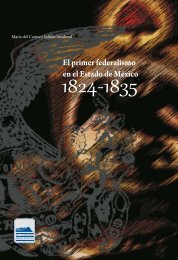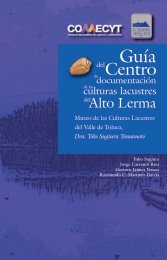Create successful ePaper yourself
Turn your PDF publications into a flip-book with our unique Google optimized e-Paper software.
KORPUS <strong>21</strong>, VOL. 4, NÚM. <strong>10</strong>, 2024, 67-78<br />
Six years later, in 1766, the age structure in<br />
convent was not much more balanced, with 16<br />
nuns in their teens, 20s, and 30s, and just three<br />
in their 40s or 50s.<br />
Age imbalance that was skewed in favor of<br />
the young meant that there was a dearth of older<br />
nuns who could socialize the novices and the recently<br />
professed into the ways of the convent. Of<br />
course at La Purísima there were no “ways”, no<br />
traditions, no customs yet, because it had not had<br />
time to develop them (and because the founding<br />
nuns themselves disagreed on fundamental<br />
issues). The numerical domination of the convent<br />
by young women adds another dimension<br />
to our understanding of the rebellion, and may<br />
even help to explain the particular nature of the<br />
second phase of the rebellion, when the youth of<br />
the rebellious nuns may have made them more<br />
suggestible, more vulnerable to the trances and<br />
“jumping sickness” from which they suffered.<br />
Did the age imbalance eventually diminish<br />
at La Purísima? And do we then see conflict diminishing?<br />
Yes and no. Even though the bishop<br />
and the post-rebellion abbesses made significant<br />
concessions to the rebellious nuns, conflict<br />
did not go away, but it did become far less<br />
existential and more petty. Generational issues,<br />
I argued on the basis of the data in my prosopography,<br />
continued to be a significant explanation<br />
for continued conflict. The measures taken<br />
by authorities to appease the rebellious nuns<br />
were expensive. Meanwhile, recruitment of new<br />
nuns during and in the immediate aftermath of<br />
the rebellion was difficult. The result was that<br />
by the late nineteenth century, the population<br />
at La Purísima was aging, as the relatively large<br />
number of young women who entered the convent<br />
in the late 1750s and early 1760s, before the<br />
rebellions became widely known (see the chart<br />
above), were in their 50s and 60s by the turn of<br />
the century.<br />
If the convent had been able to resume recruitment<br />
at a steady pace after the rebellions<br />
were over, the age structure would have evened<br />
out. But the number of professions continued to<br />
lag. The goal of reaching 72 professed nuns, a<br />
number that would have produced an endowment<br />
large enough to support the convent, never<br />
came close to being reached. The financial<br />
crisis that resulted from having an inadequate<br />
endowment to support the living nuns became<br />
self-fulfilling, discouraging entry into the convent<br />
just as effectively as the rebellions had<br />
done in the 1760s.<br />
The broader financial crisis that followed on<br />
the 18<strong>10</strong> insurgency made things worse. From a<br />
high of 41 professed nuns (choir nuns and whiteveil<br />
nuns) in 1797, the number of nuns fell to 24<br />
in 1823 and to 17 in 1844, as the “bulge” generation<br />
of early entrants into the convent died and<br />
the bishop did not allow new entrances. In light<br />
of the convent’s small endowment and history of<br />
financial troubles he did not want to admit any<br />
young women without a dowry, but there were<br />
few such women: the only ones who wanted to<br />
enter such an impoverished convent were those<br />
who did not have money for a dowry. By 1857,<br />
the number of choir nuns and legas was only 14,<br />
despite a recruitment bubble in 1854.<br />
The reduced number of nuns and the fact<br />
that the new nuns since 18<strong>10</strong> had been admitted<br />
in clusters (eight in 1829-32, three in 1844, and<br />
six in 1854, all moments in the national political<br />
history when the government was threatening<br />
to close down the smaller convents), could not<br />
help but make for sharper generational conflicts<br />
than would be the case in a convent with a mature<br />
and normal age structure with a steady rate<br />
of entry. Ironically, then, the generational conflict<br />
that was a major source of friction in the<br />
convent’s early years now resurfaced in its waning<br />
years, but upside down. Instead of too many<br />
young nuns, now there were too many older<br />
ones, and they clashed with the young 1854 cohort<br />
in particular. Some of the nuns in the 1857<br />
visita secreta referred to the abbess’s special<br />
relationship with the “jóvenes”, the six recentlyprofessed<br />
nuns whom she “instructed” in her<br />
cell in late-night meetings (AHAMich, 1857: caja<br />
376 (XIX), exp. 52).<br />
Age at entrance<br />
Prosopography permits another insight into the<br />
convent’s life story when we consider the age<br />
of the future nuns at the time of their entry into<br />
the convent. In the early years at La Purísima an<br />
unusual number of nuns in the early years were<br />
very young when they entered: the median age<br />
at entrance between 1756 and 1766 was 18.5, and<br />
nine girls were 16 or under. 13 The rival factions<br />
13 Between 1756 and 1760 the median age was 19.<br />
73



![bicentenario_1[V2]](https://img.yumpu.com/68677971/1/167x260/bicentenario-1v2.jpg?quality=85)
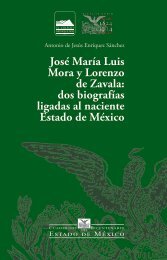
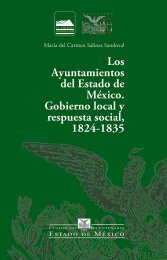

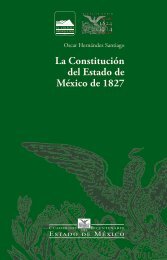
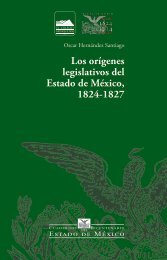
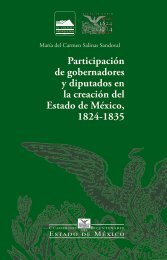
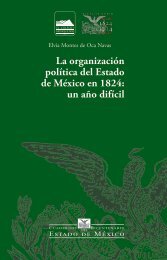
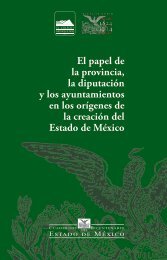
![El_primer_federalismoEM[final]_compressed (2)](https://img.yumpu.com/68483279/1/178x260/el-primer-federalismoemfinal-compressed-2.jpg?quality=85)
